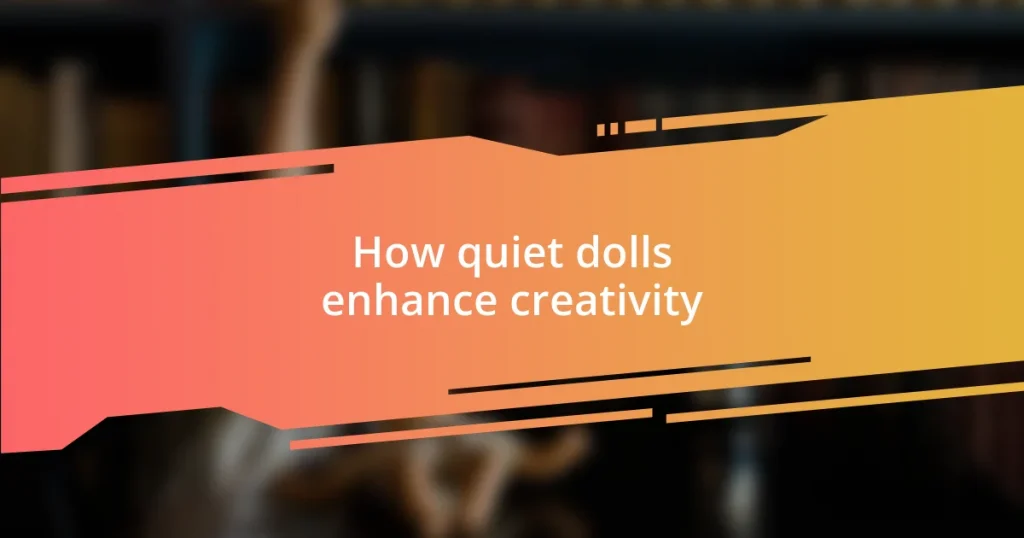Key takeaways:
- Quiet dolls promote creativity by providing a silent platform for children to imagine and narrate their own stories, fostering emotional intelligence and focus.
- Imaginative play enhances problem-solving skills and resilience, encouraging children to navigate challenges and collaborate with peers during unstructured activities.
- Open-ended play scenarios facilitate emotional exploration and adaptability, allowing children to express their feelings and develop resourcefulness through creative experiences.
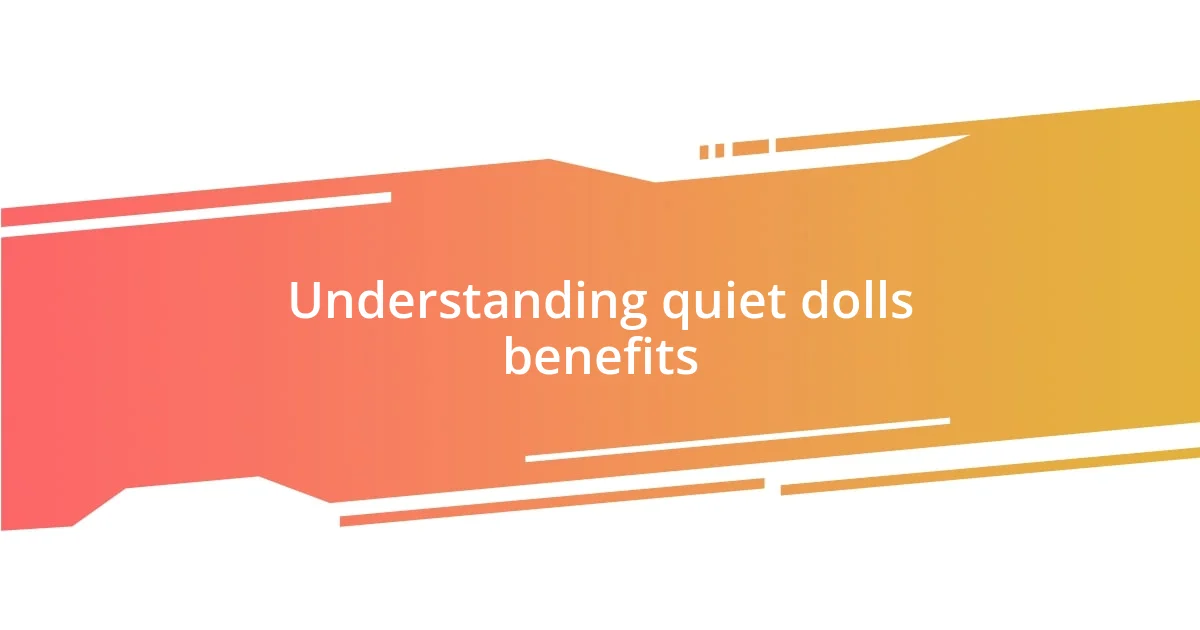
Understanding quiet dolls benefits
Quiet dolls offer a unique canvas for children’s imagination, encouraging them to create intricate stories without the distraction of noise. I remember watching my niece play with her quiet dolls, transforming them into an entire world of adventures. The absence of sound allowed her to dive deeply into her thoughts, crafting narratives that unfolded just as she envisioned them.
One of the most compelling benefits of quiet dolls is their ability to nurture emotional intelligence. Through imaginative play, children explore complex feelings and situations. I’ve seen kids use these dolls to navigate their emotions—whether it was a new sibling arriving or making friends at school—creating a safe space to process their feelings. Isn’t it fascinating how something as simple as a doll can become a tool for emotional growth?
Another significant advantage is that quiet dolls promote focus and concentration. In a world filled with distractions, I’ve noticed that children who engage with these dolls tend to play longer and with greater purpose. They invest time in imagining scenarios, which not only hones their creative skills but also cultivates patience. Have you ever watched a child so deeply engrossed in play that time seemed to stand still? That’s the magic of quiet dolls at work!
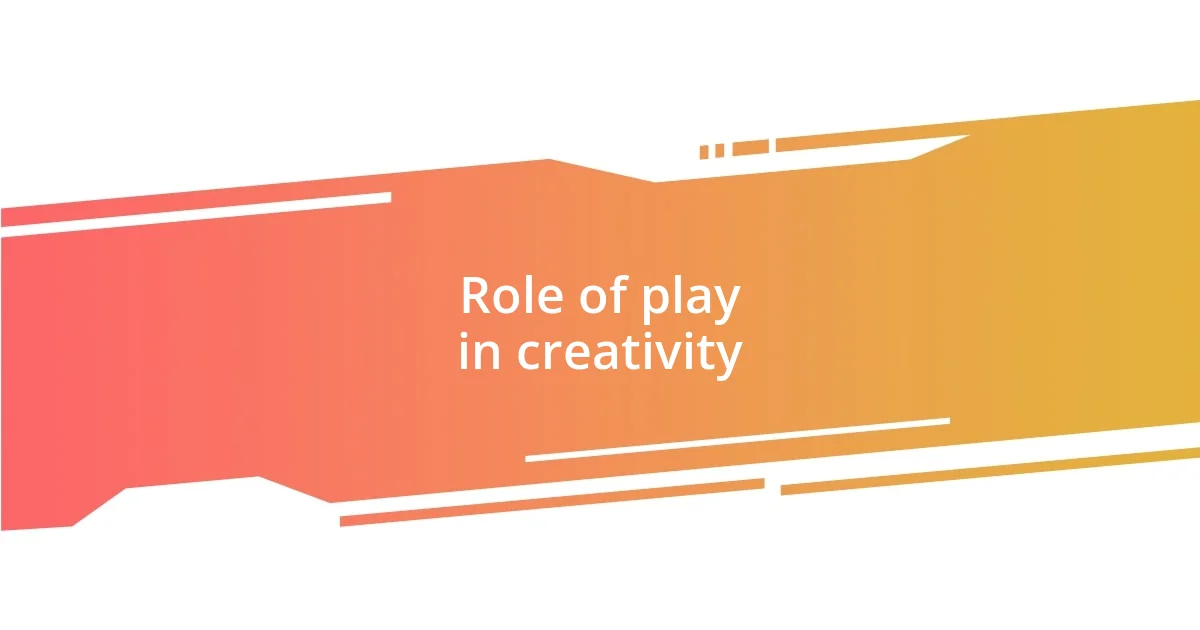
Role of play in creativity
One cannot underestimate the foundational role of play in fostering creativity. I remember a particular day at the park where I watched a group of children transform a simple stick into a pirate ship. Their exuberance was palpable; it was a vivid reminder of how play shifts their thinking, allowing them to explore possibilities freely. Through this imaginative process, children learn to approach challenges with innovative solutions—a skill that benefits them for years to come.
As children delve deeper into their imaginative play, they develop essential problem-solving skills. I once observed my son spending hours constructing an elaborate fort out of pillows and blankets. Each time it collapsed, he’d adjust his design instead of giving up. This resilience not only fueled his creativity but also built his confidence in navigating obstacles, something I cherish witnessing in the playground arena of life.
Engaging in unstructured play also fosters collaboration and communication among peers, invaluable components of creativity. I recall the joy when my friends and I would gather to create a theater show using just our toys. We negotiated roles, built our storyline, and crafted improvised dialogues. This collaborative spirit not only brought our imaginations to life but also created strong bonds between us—an experience that was as enriching socially as it was creatively.
| Aspects of Play | Effects on Creativity |
|---|---|
| Imaginative Exploration | Encourages flexible thinking and innovative solutions. |
| Problem-Solving | Promotes resilience and adaptability in overcoming challenges. |
| Collaboration | Fosters teamwork and communication skills, enriching creative processes. |
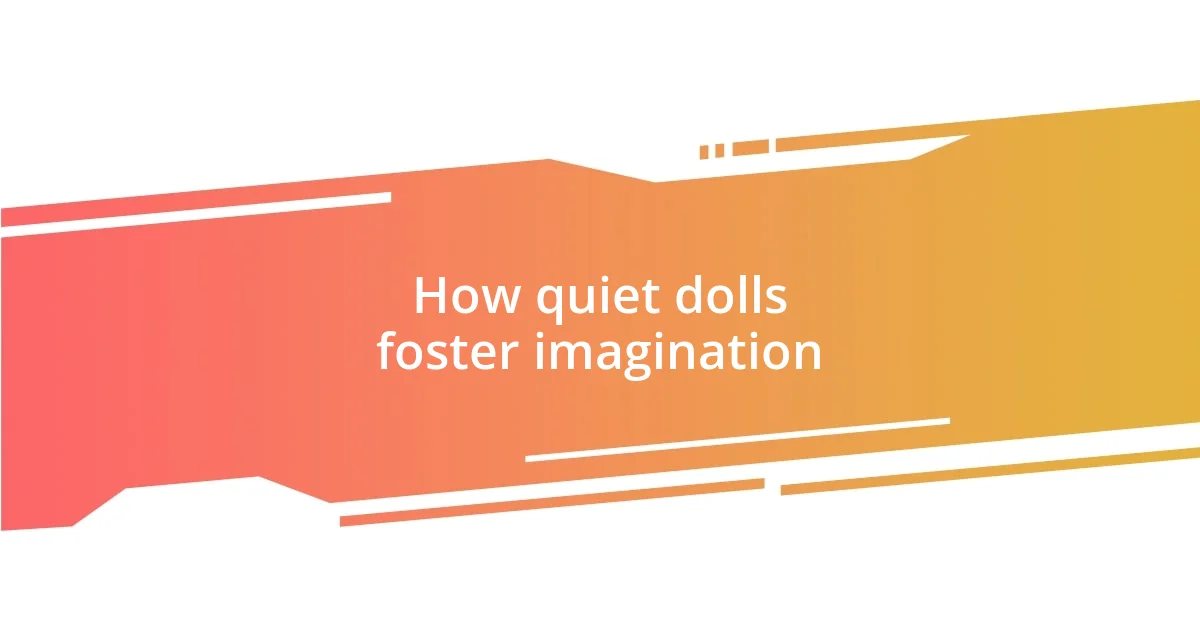
How quiet dolls foster imagination
Quiet dolls offer an exquisite opportunity for children to shape their own make-believe worlds. I distinctly recall a rainy afternoon when my daughter took her quiet doll and, using just a few pillows and a small flashlight, turned our living room into a magical kingdom. The hush of the environment empowered her to weave an elaborate tale about a brave princess facing dragons, allowing her creativity to flourish unhindered by external noise. This immersive play not only sparked her storytelling skills but also gave her the freedom to explore uncharted territories in her imagination.
When children engage with quiet dolls, they can cultivate a deep sense of autonomy, which is vital for imaginative play. Here’s a quick look at some important ways quiet dolls foster imagination:
- Endless Possibilities: With no built-in sounds, children are encouraged to create their own narratives, enhancing their problem-solving abilities.
- Self-Expression: Quiet dolls enable kids to express emotions and scenarios in a safe way, reflecting their inner thoughts and situations.
- Focus on Detail: The tranquility allows children to pay more attention to the minutiae of their stories, such as character traits and plot twists, nurturing deeper thinking.
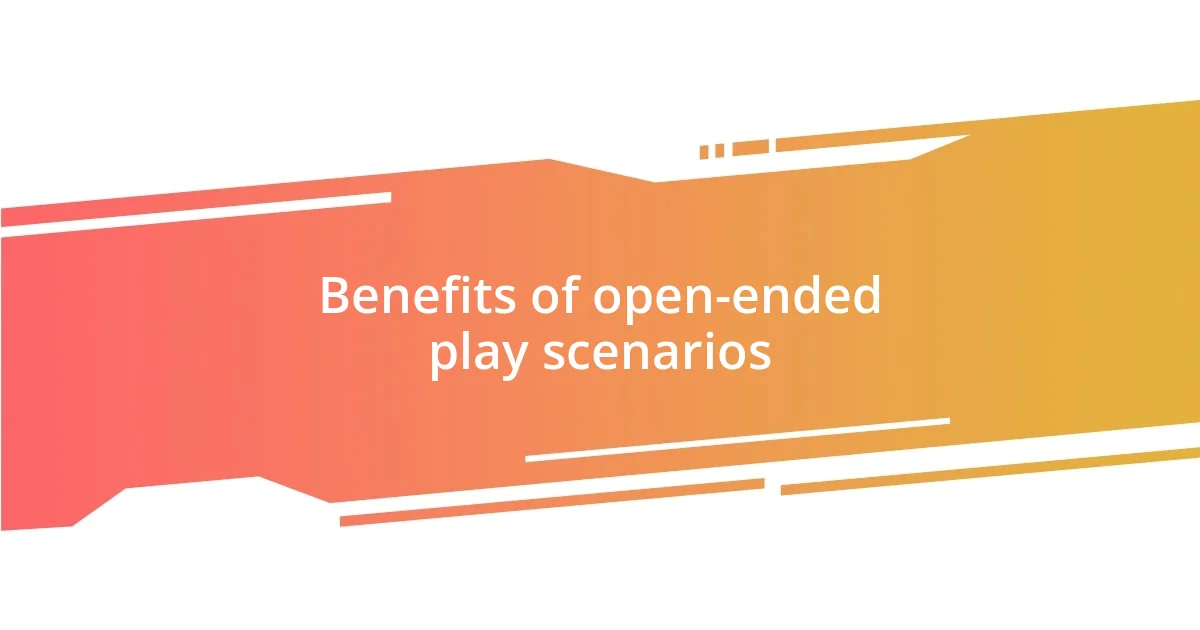
Benefits of open-ended play scenarios
Open-ended play scenarios are a treasure trove for nurturing creativity in children. I remember a sunny afternoon at the beach when my kids and their friends decided to dig a giant sandcastle. With just a bucket and some shovels, they weren’t bound by rules; they could shape the castle however their imagination led them. It’s incredible to see how they collaborated, discussing which towers to build and where to place the moat. That unstructured environment prompted a flurry of ideas—imagination fueled by spontaneity.
What truly amazes me about open-ended play is how it allows children to engage with uncertainty. During one family gathering, I watched my nephew use a pile of boxes to create a spaceship in the backyard. He faced a dilemma when his initial design didn’t hold up, but rather than feeling defeated, he embraced the challenge, redesigning his craft on the spot. This adaptability is so crucial for creative thinking, and witnessing his excitement as he overcame obstacles made me realize just how pivotal these experiences are for developing resourcefulness.
In my view, open-ended play also sparks emotional intelligence by giving children a safe space to navigate their feelings. Last summer, my daughter created a makeshift puppet theater with her friends, using a blanket as the curtain. As they invented different characters and scenarios, they addressed themes like friendship and bravery. The laughter and discussions that ensued revealed how engaged they were with the emotions behind the stories they crafted. Isn’t it fascinating how play can mirror their own experiences and help them process complex emotions? This kind of imaginative freedom is what open-ended play scenarios uniquely provide.










